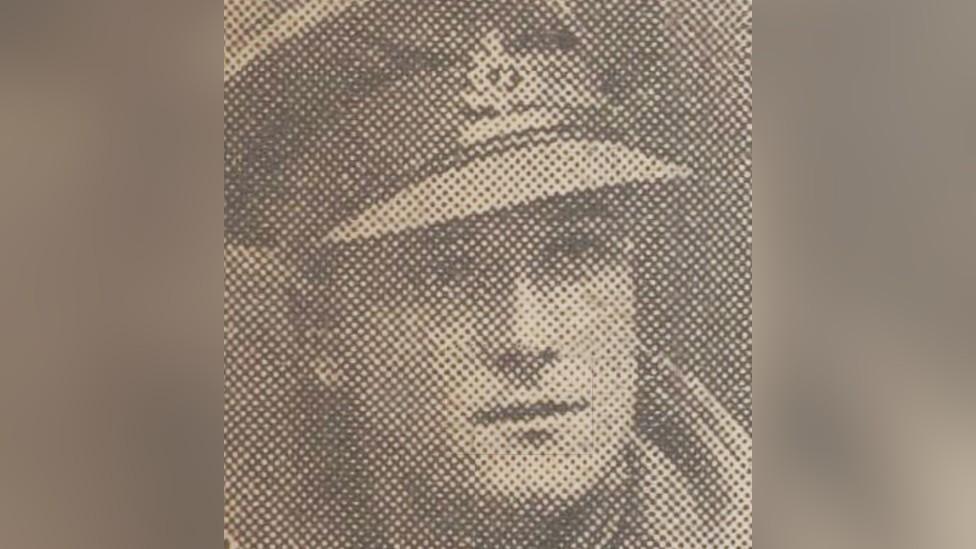WW1 soldier's belongings 'brought home' to Suffolk museum
- Published
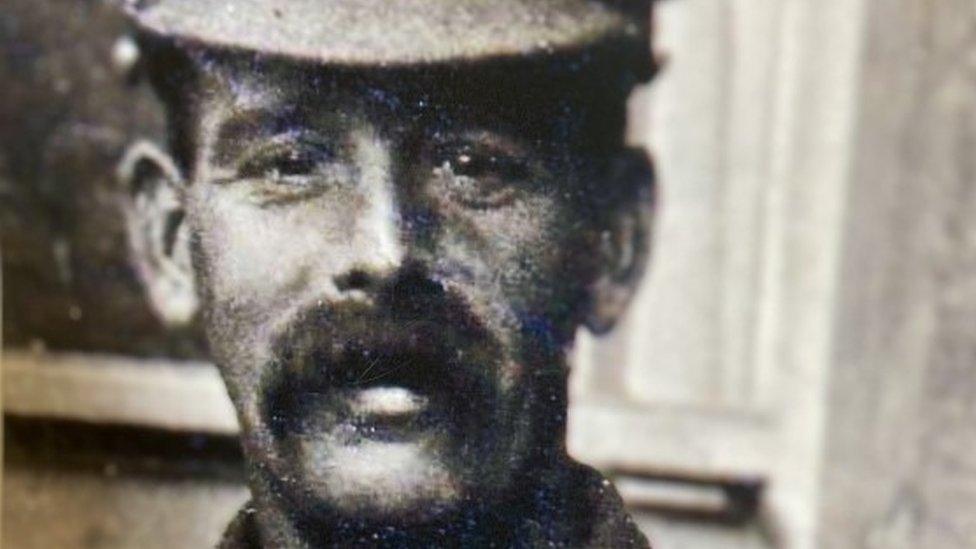
Father-of-four L/Sgt Charles Stevens, died 105 years ago on 28 April 1917, aged 42
A pocket watch and other "remarkable" artefacts found with a soldier killed in World War One have been donated to a museum by his grandson.
L/Sgt Charles Stevens, from Cambridge, was in the 11th Suffolks when he died in the Battle of Arras in 1917.
When his remains were found, Colin Fakes was traced and given items which had survived underground for 75 years.
Mr Fakes, who has now given them to a museum in Suffolk, said: "I think it's a story that all should see."
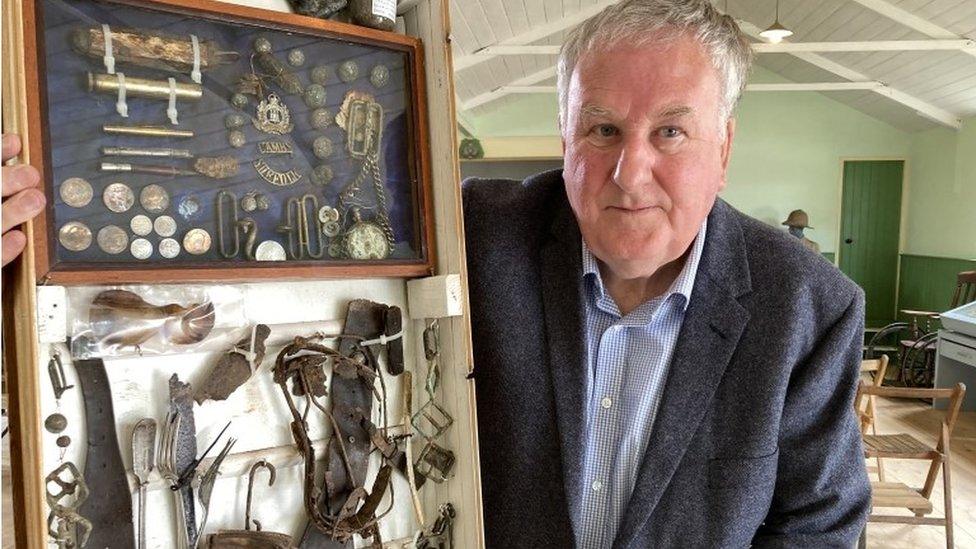
Colin Fakes was given his grandfather's possessions by the French family who found them
He had known virtually nothing of his maternal grandfather's death - only that he had served in the war - when he received a phone call from a man in France in 2013.
"He said they had discovered a body where this chap had been digging a foundation for a wall, and they believed it was a British soldier, and that it was my grandfather," said Mr Fakes.
"I thought 'what the devil is all this, is it a prank?'
"I didn't believe that of all the millions killed that they'd managed to dig up my grandfather."
The French family had uncovered the unknown body while building an extension, in Roeux, near the city of Arras, some 20 years earlier.
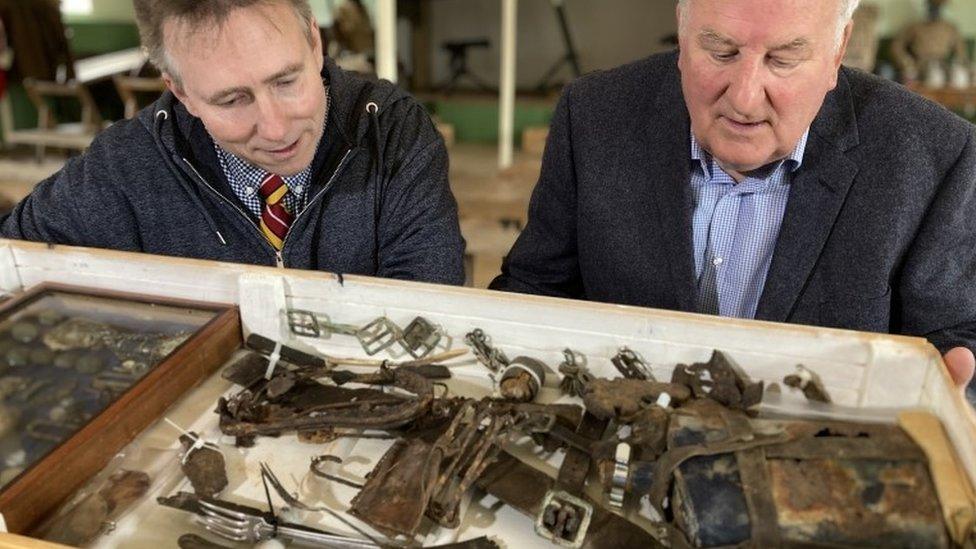
Taff Gillingham (left) is a military historian
L/Sgt Stevens was identified from his regiment number on a spoon, and given a burial by the War Graves Commission, but the family had wanted to inform any living relatives and pass on the possessions found with him.
After years of dogged research, the internet eventually helped them trace Mr Fakes - who visited Roeux and became a friend of the family.

A pocket watch and buttons which were found with the body of L/Sgt Charles Stevens
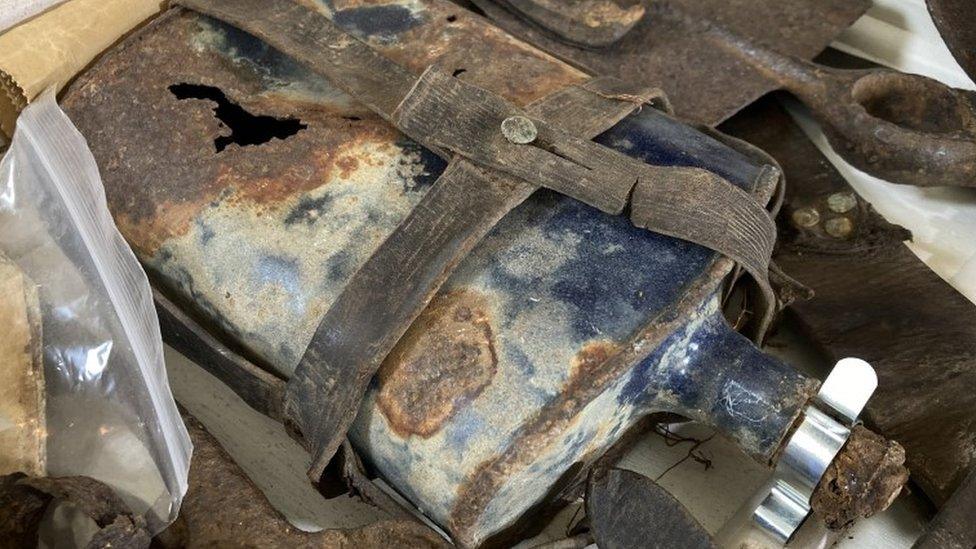
A flask in its leather casing was also found
Military historian Taff Gillingham, who helped set up Great War Huts in Hawstead, near Bury St Edmunds, said it was not uncommon for soldier's bodies to be found near homes on former battlefields.
"What was quite remarkable is to see how much of his kit was still with him," he said.
"It's not very common for people to find the stuff that their relative was wearing on the day when they were killed, and to be given it.
"In most cases, everything has rotten away - leather, fabric, metal - most stuff doesn't survive.
"What's remarkable about Charles Stevens is we have the badges, the change in his pocket, the leather equipment, the wire-cutters, his pencil.
"You can literally piece together the last few days of his life based on what he was carrying when he died."
He added there was a good chance L/Sgt Stevens had used an original barrack hut which is now installed at the museum in Suffolk, so it could be said he would now be "with his old mates".
Mr Fakes agreed, adding: "In some way, we are bringing grandfather home."
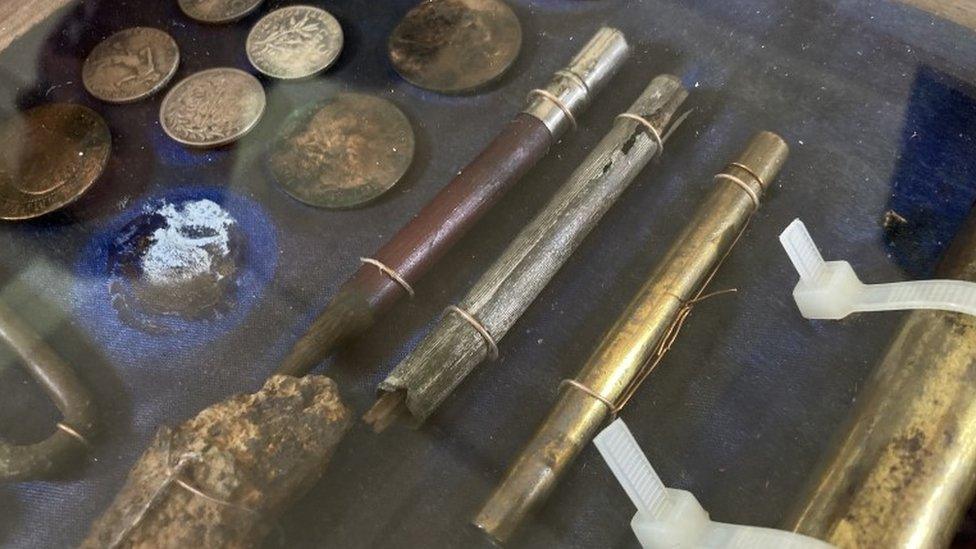
Coins and a pencil were among other items found with L/Sgt Charles Stevens

Find BBC News: East of England on Facebook, external, Instagram, external and Twitter, external. If you have a story suggestion email eastofenglandnews@bbc.co.uk, external
- Published10 March 2022
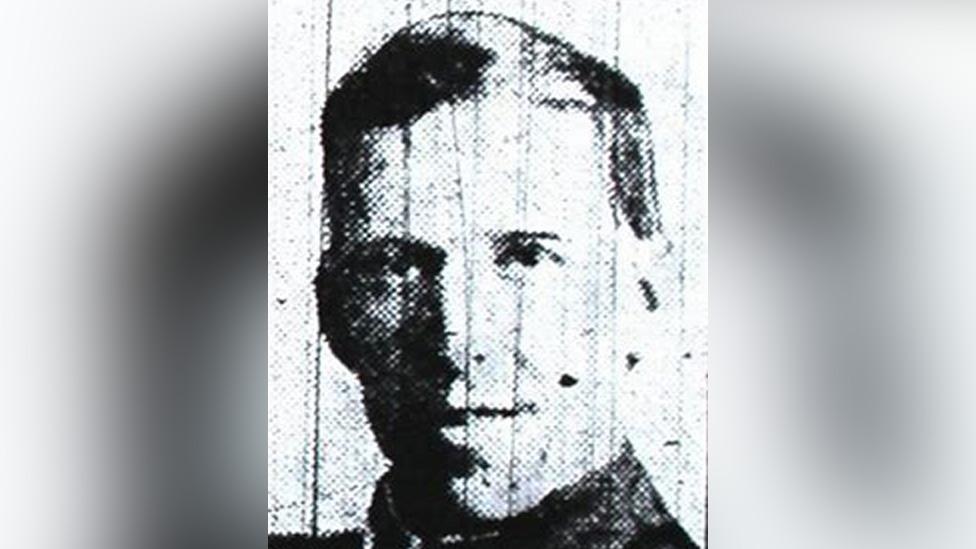
- Published20 February 2022
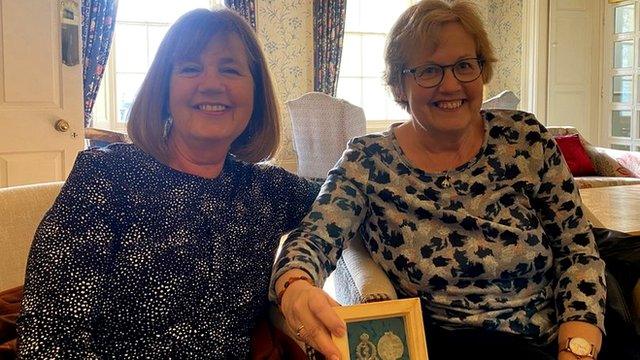
- Published31 July 2021
